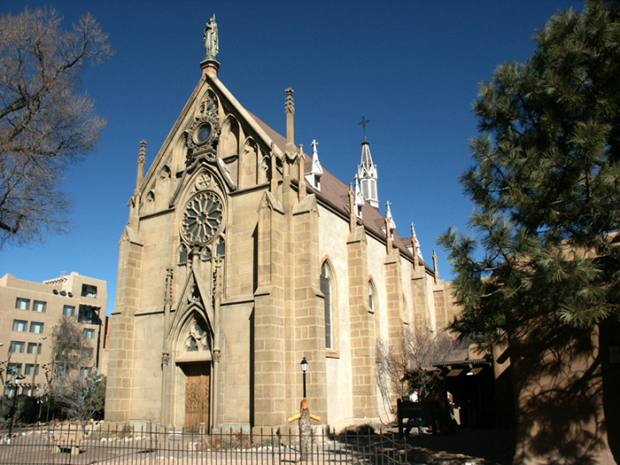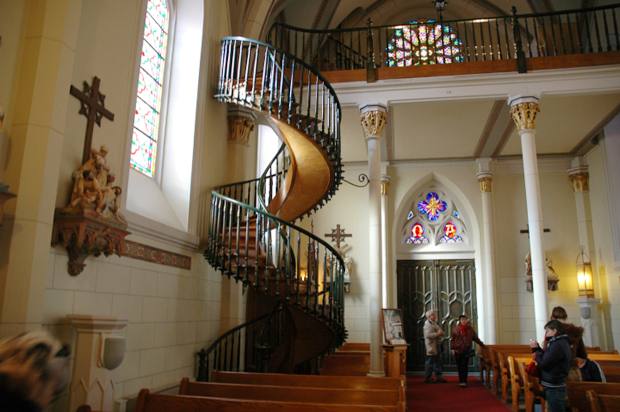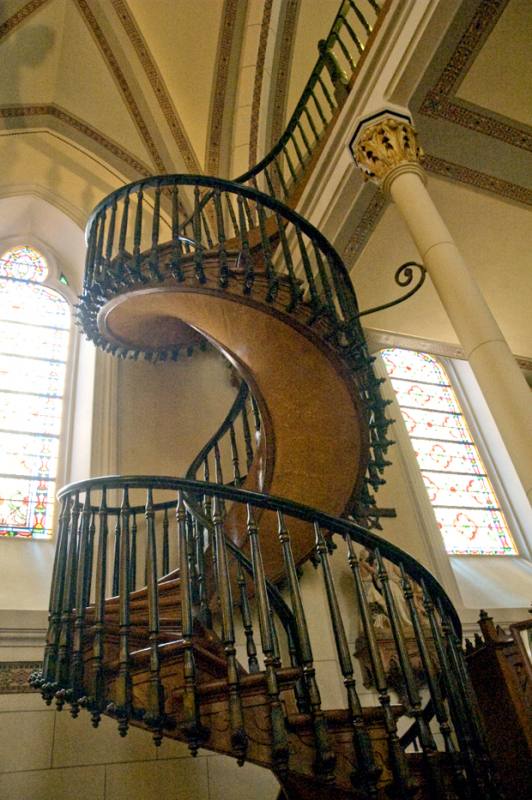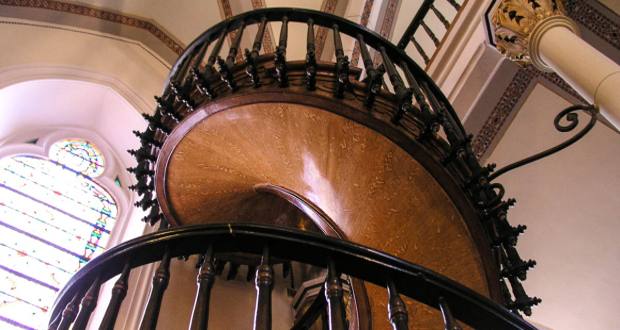The staircase of Loretto Chapel in Santa Fe, New Mexico is well known for being surrounded by at least two mysteries: the identity of its builder and the physics of its structure. No one is able to fully understand how the structure can stand on its feet without any kind of central support attached to it. There is, maybe, a third mystery, too: although the staircase is known to be made of spruce wood, no one has been able to determine either what subspecies of spruce it is, or even how the wood got to the chapel.
In 1852, by order of the bishop of Santa Fe, Jean Baptiste Lamy, the Chapel of Our Lady of Light (inspired by the Sainte-Chapelle in Paris) was built. It was placed under the care of the Sisters of Loretto, who were to arrive from Kentucky to found a school for girls.
When the chapel was ready, builders were faced with an unexpected problem: there was no way to climb from the nave to the choir, on the second floor. It was a sad error in the design — one that the building’s architect, Antonio Mouly, could not solve, since he had already passed away. When the nuns insisted on building a staircase, the builders told them it would be impossible, and that building a normal, regular ladder would take too much room. Finally, they advised the nuns to demolish the choir.
Instead, the nuns decided to pray a novena to St. Joseph, patron saint of carpenters, asking for a solution.
After finishing the novena, according to testimonies that have passed from generation to generation since the mid-nineteenth century, a man appeared at the door of the chapel, saying that he could build a stairway, under one condition: he be granted total privacy.
The stranger locked himself in the chapel for three months with a saw, a square and a few other simple tools, and disappeared as soon as the work was finished, without ever having asked for any payment for his services.
The staircase, which is around six meters high, takes two full turns over its axis until it reaches the choir. It was built without any nails or glue, and lacks any kind of central support. The construction itself is said to be “impossible.” According to some, it should have collapsed the very first moment someone used it, although it is assumed that the central spiral staircase is narrow enough to work as a central support on its own.
In any case, the original staircase was not attached to any wall until 1887, ten years later, when the railing was added, and the outer spiral was attached to a nearby pillar.
Tradition claims the mystery of the identity of the carpenter has never been satisfactorily solved, and there is not even a delivery report that might help decipher where the wood came from. During those three months, no one saw anyone entering or leaving the chapel.
As the carpenter left before the Mother Superior could pay him, the Sisters of Loretto offered a reward to anyone who could his make identity known, but no one ever showed up. So, yes: since then, the crafting of the staircase has been attributed by many to St. Joseph himself.
–aleteia.org
Pope Francis considering adding ecological sin to Catholic catechism
 Metro Voice News Celebrating Faith, Family & Community
Metro Voice News Celebrating Faith, Family & Community 








